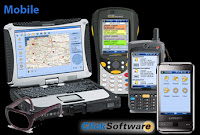I have consulted with many enterprise mobility vendors. The new start-ups are often the most concerned with hiding all of their secrets. They want every prospect to sign NDAs (non-disclosure agreements) and they only want to share the information that is on their marketing brochures. They soon learn or they go away.
There are already so many new things to learn, that prospects and potential resellers have no idea what secrets you have that are worth stealing. I have seen mobile start-ups delay or jeopardize entire sales cycles over confidentiality concerns. The bottom line is that it is important to protect your retirement but recognize what is worth protecting.
I have had companies go through long NDA discussions with me. They tell me they have the most important new mobile technology on the planet, only to discover weeks later that the technology they have I saw five years ago or my own team developed years ago.
There may be times when your technology is worth billions. However, if you prevent your business from taking off over confidentiality concerns, then you will never know. The value of your technology is based primarily upon the number of customers and potential customers that use or will use it. Your focus should be on building a customer base - sales trump secrets every time.
I have said it before, the high tech world is littered with "better technology" that nobody bought. If you are a mobile enterprise application start-up, the most important thing you can be doing is closing sales, building a customer base, and creating a brand through thought leadership - not protecting secrets that nobody even knows you have or cares that you have.
Smartsoft Mobile Solutions has over 400,000 mobile clients in the field. Many of these mobile applications are B2C (business to consumer) applications that were custom developed for their large multi-national retail customers. With 400,000 users you can be sure they don't make it difficult for their customers to use these mobile applications. They don't negotiate non-disclosures with hundreds of thousands of mobile customers. They recognize that the value is in the numbers of users.
If you would like to discuss this subject in more detail or discuss my consulting services please contact me.
My Advice to Mobile Applications Vendors, Part 1
My Advice to Mobile Applications Vendors, Part 2
My Advice to Mobile Applications Vendors, Part 3
***************************************************
Kevin Benedict, SAP Mentor, SAP Top Contributor, Mobile and M2M Industry Analyst
Phone +1 208-991-4410
twitter @krbenedict
Join SAP Enterprise Mobility on Linkedin:
http://www.linkedin.com/groups?about=&gid=2823585&trk=anet_ug_grppro
Full Disclosure: I am an independent mobility consultant, mobility analyst, writer and Web 2.0 marketing professional. I work with and have worked with many of the companies mentioned in my articles.







